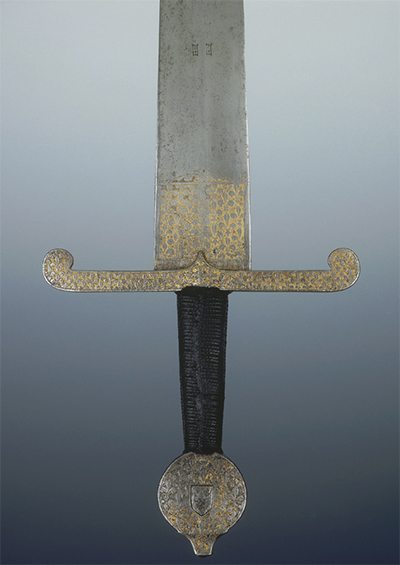Birth of the modern state and development of artillery
1328-1415: the origins of the Hudred years' war and the beginnings of gunpowder artillery
In 1328, the King of France, Charles IV, died without an heir. The King of England, Edward III, descendent of Saint Louis on his mother’s side, could lay claim to the throne of France. However, the French barons preferred Philippe de Valois, cousin of Charles IV, who became king under the name of Philip VI.
In 1337, Philip VI confiscated Guyenne from Edward III, which gave rise to claims by the King of England.
The war began. It was to last for 116 years with long periods when hostilities were suspended.
In this troubled context, gunpowder artillery appeared timidly in the West. It was first used to defend fortresses. As a long-distance weapon, it was strongly opposed, like the arbalest two centuries before, on moral grounds, which is why it was absent from the battlefield where the chivalrous values still dominated.
The French and the English at Agincourt
The two armies that fought at Agincourt were organised according to different principles.
The French ost, i.e. the French feudal army, largely comprised noblemen. It was a grouping of all the vassal knights of King Charles VI. They were horseback soldiers who fought with a lance and sword. In addition to this group were contingents of infantrymen armed with bows, either archers or crossbowmen. In the absence of the King, who was suffering from madness, the commander Charles d’Albret, his military advisor, led the army.
The English army mostly comprised foot soldiers who were ordinary commoners. They were hired for military campaigns and placed under the command of a nobleman, the captain of the company. At Agincourt, the young King of England, Henry V, led the battle and the Duke of Erpingham commanded the archers. The latter, who were trained in archery from a very young age, were able to shoot up to about 10 arrows a minute.
The archers also had short swords and lead mallets with which they could defend themselves in close combat.
1415-1429: the decline of the French kingdom: from the defeat at Agincourt to the double monarchy
The Battle of Agincourt had disastrous consequences for France.
In military terms, the feudal type of army had demonstrated its limits.
It therefore seemed necessary to make extensive reforms to the army.
In political terms, the royal council and the main administrative departments were devastated: the princes who reigned over them has been killed or taken prisoner.
Benefiting from this weakness, Henry V landed in Normandy in 1418.
The strongholds fell one after the other. Only Rouen resisted until January 1419 but finally surrendered after a gruelling siege: Normandy was not in the hands of the English. Negotiations then began, which were supposed to put an end to the war. They led to the signing of the Treaty of Troyes on 21 May 1420, which disinherited the dauphin Charles in favour of Henry V. The latter died before Charles VI so the young Henry VI inherited the title of King of France and England although the future Charles VII had not renounced his claim to the throne. Two monarchs now reigned over France in a double monarchy.

















